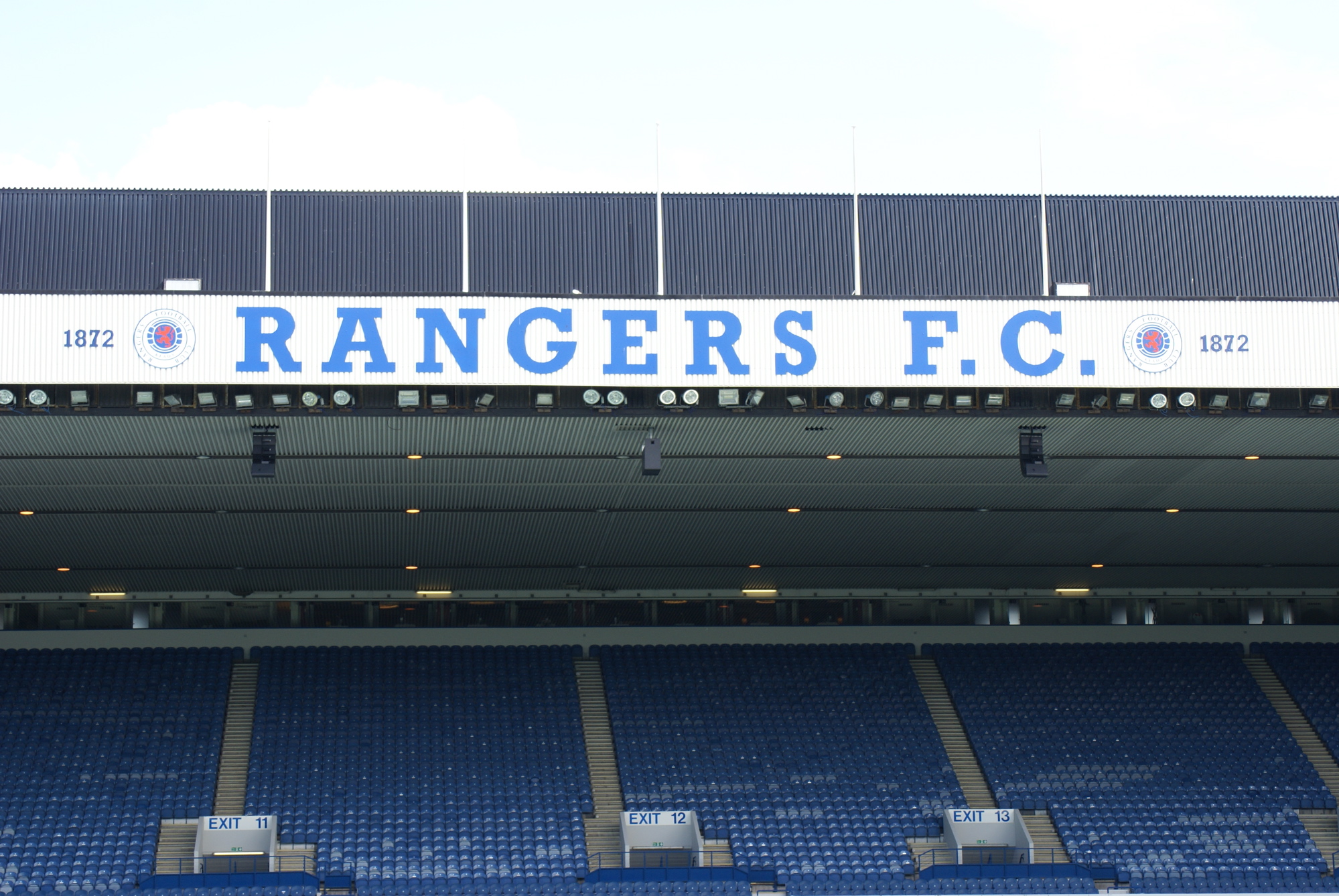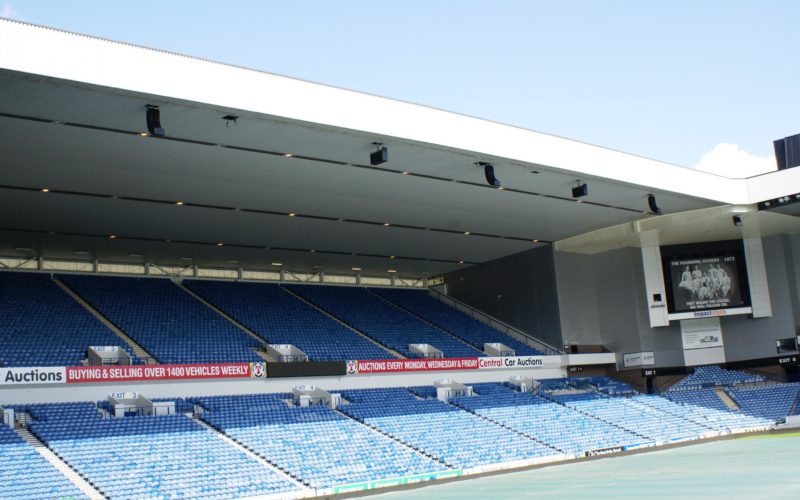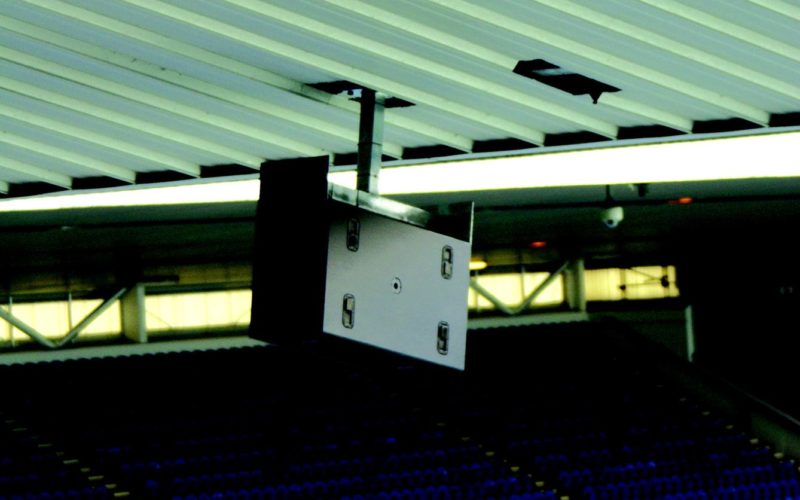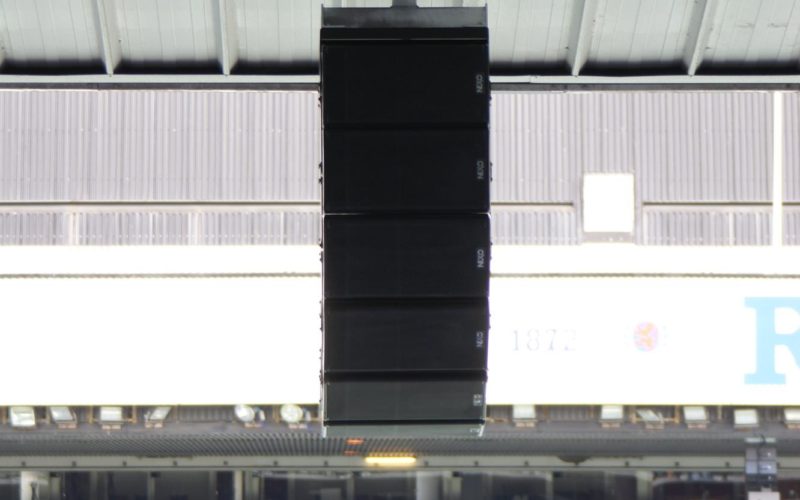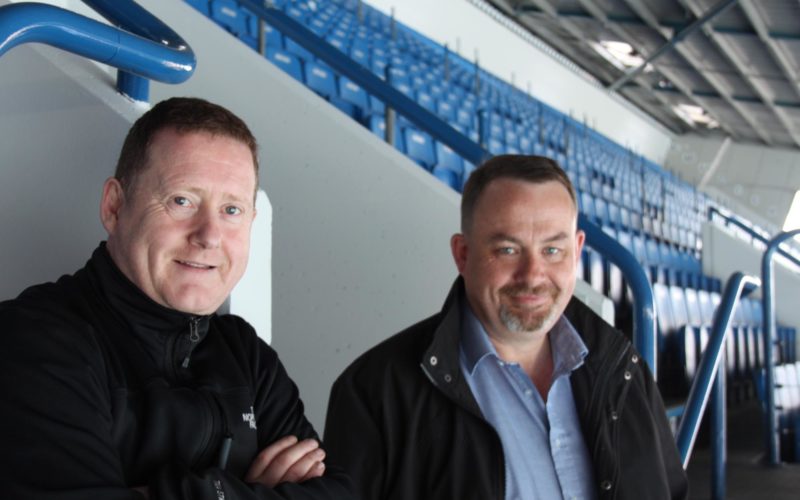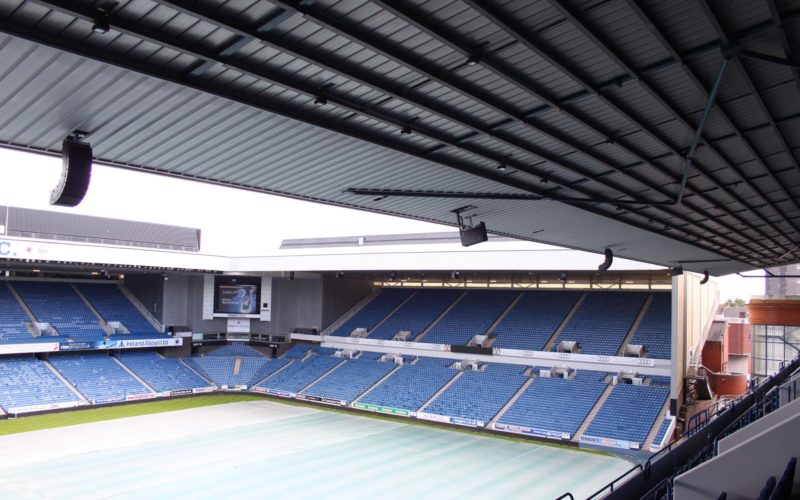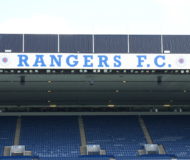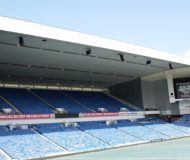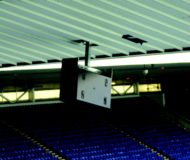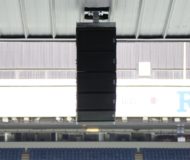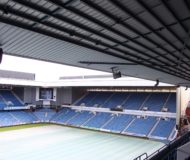Scottish Premier League Champions, Rangers occupy an historic stadium venue inGlasgow. Ibrox is ‘listed’ as a heritage site, which means that parts of the 130-year old building’s architecture are protected by law. It is also of huge cultural importance to its community of supporters; many fans have been attending matches, sitting in the same seat, for decades, and so the design and installation of a new sound system had to consider sensibilities far and above the provision of audible evacuation instruction.
Stephen Scott, project manager for Ibrox, explained that the respect for the club’s supporters was one of the most critical factors in the new design. “The objective was that the dispersion would be such that the SPL would be exactly the same in every seat in the stadium. And to be sure, believe me, we will check every seat in the stadium.”
Scott has formed a formidable team consisting of his installer Tommy Gorman of Sound Acoustics, Richard Northwood of COMS and Gareth Collyer of NEXO, key supplier to the project. Between them, these experienced professionals have seen through one of the most significant AV/PA overhauls in British football. Not only are Rangers the national champions, but Ibrox is one of the ten largest football stadia in theUK, and, as such, sets a prominent example to the rest of the elite clubs.
Northwood’s design, based on a long working relationship with the venue, responded to the club’s modern-day need for a high-quality system, offering wider bandwidth and lower frequencies than its previous brand, and capable of delivering superior pre-match entertainment and audio support for the on-screen advertising.
“Rather unusually for a sports venue, the Ibrox team was concerned about the actual quality of audio,” says Richard Northwood. “For a short time, they had been renting in a pitch-side system but that was not ideal. In an extensive research period, they went to visit some other clubs, but what proved decisive was a trip to the Stade de France inParis, the national stadium ofFrance, and listening to the new NEXO installation there.”
Unlike the famous elliptical shape of the Stade de France, Ibrox has a more conventional rectangular design. “It is close to symmetrical, which is good from my point of view as I don’t have to do so many sums,” jokes Northwood. The two matching side stands house 7,500 fans at each end. The long sides of the stadium’s rectangle, named as the Govan Stand and the Bill Struth Main Stand, seat the majority of spectators. In the roof of each of these two shorter stands are 2 clusters of NEXO GEO S12 line array modules, each cluster comprising 6 cabinets, and alternating with pairs of RS18 sub bass. In the long stands, there are 4 clusters of S12 modules, and 3x RS18 sub bass points. Single S12s and NEXO PS8s handle the balcony requirements of the club deck in the main stand, and additional clusters of GEO S1210 support the large video screens in the corners of the stadium. In total, there are just over 100 NEXO loudspeaker cabinets in the stadium, entirely powered by 12x NXAMP4x4 loudspeaker management processor/amplifiers.
“We were all impressed by the sound quality of the system in the Stade de France,” says Stephen Scott, “but it was also a question of aesthetics. NEXO’s GEO S12 cabinets array into very compact clusters which don’t obscure any sightlines. The installation is zoned per stand, with the pitch being an extra zone, and we have wired each cluster individually back up to the roof, which enables us to control which boxes are coupled in each cluster. By doing that, we can put more power into the lower boxes, which are throwing over a longer distance.” With its IPCOV, the GEO S12 has an IP54 rating, critical for stadium use as it promises a level of protection against the weather.
Ibrox is using NEXO’s customised S12-ST cabinet, a special-order variation on the popular S12 line array design, modified with a +3dB treble boost to provide the output necessary for a loudspeaker that is installed so far above its listeners: 45 metres above, in the case of the Stade de France, for which it was originally developed.Ibrox has also become the first stadium in theUKto install the RS18 subs.
The S12 cabinet offers a high degree of intelligibility, which is central to a PA/VA system design. “Some games can get a little raucous,” says Richard Northwood. “We originally set the target level of the system at 102dB, but, with 106dB of ambient crowd noise on occasion, we were pleased to see that the new custom version of the S12 is capable of 105-8dB. It is Rangers club policy to drive the system fairly hard to try to whip up atmosphere and provide a bit of razzamatazz. Unlike many other places, Ibrox Stadium has no problem with noise leakage – people actually want to live nearby because they are fans.”
Tommy Gorman of Sound Acoustics has overseen every step of the installation project, from running 3.5 kilometres of cables to extend the existing fibre network, to setting up the diagnostic and maintenance protocols based on the functionality of the NXAMPs, which are also being used to drive the stadium’s existing 100V line system “so we could mix and match flat amp response along with the NEXO cabinets.” Gorman also draws attention to the small footprint of the NXAMP racks. “You get more power for less rack footprint, which is a big cost saving.”
Consultant Richard Northwood used NEXO’s NS-1 software to satisfy himself that dispersion would be exactly the same in every seat. “I had faith in the overall reputation of NEXO and the experience of the installer Sound Acoustics. But we also had very good prediction tools, and the uniformity of the cabinets, so we could be confident about the performance of the arrays.
“The big moments for the sound system come with the pre-match entertainment, and at the start of the second half when the teams run out. When they played the big number from Orff’s Carmina Burana, we saw the upper deck of the main stand was actually shaking, and we knew our work was done! I think we’ve ended up with the best-sounding stadium system in theUK.”















































